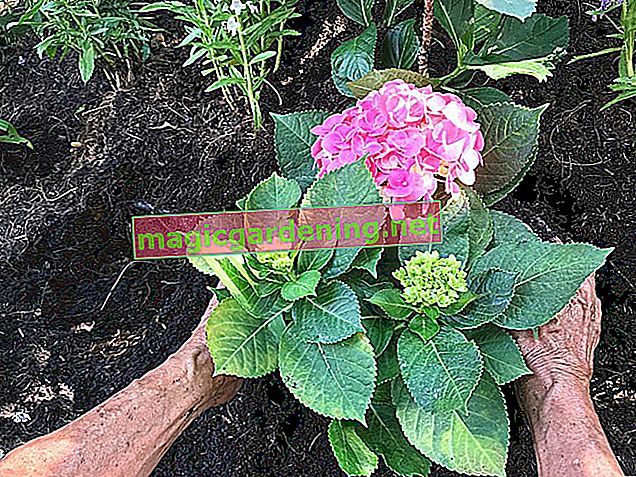
Soil texture similar to a forest floor
The natural habitat of the hydrangea are light forests, where it grows into magnificent bushes in the shade of large trees. The soil here is loosely deep and, due to the rotting of leaves, needles and twigs, rather acidic.
also read
- Which soil does the hydrangea prefer?
- What size does the hydrangea reach?
- Which plants are suitable for underplanting the hydrangea?
Store water but avoid waterlogging
The Greek name Hydrangea means “water slipper” and stands for the peculiarity of the hydrangea to be extraordinarily thirsty not only in hot weather. At the same time, the plant is very sensitive to waterlogging in the root area, which must be avoided at all costs. A special feature of the soils in which the hydrangea feels comfortable is its ability to soak up large amounts of water like a sponge without forming waterlogging.
Acid soil affects the color
You can get hydrangeas in many wonderful shades on the market. The color palette ranges from greenish-white to pink, pink, red, violet and blue. A pink hydrangea only retains its color when the pH of the soil is around 5.5. Blue hydrangeas need a pH below 4.5. Pink and red tinted specimens, on the other hand, love alkaline soils with a pH value above 6.
Which soil is suitable for tub and garden hydrangeas?
In order to meet these soil requirements, the topsoil was often improved by peat until a few years ago. For ecological reasons, you should do without peat today and better use hydrangea soil from specialist gardeners. Alternatively, you can also use the hydrangea in rhodendron soil, which has roughly the same soil structure.
Tips & Tricks
Repot tub hydrangeas about every two years. This means that the hydrangea always has fresh and, above all, loose substrate available.








